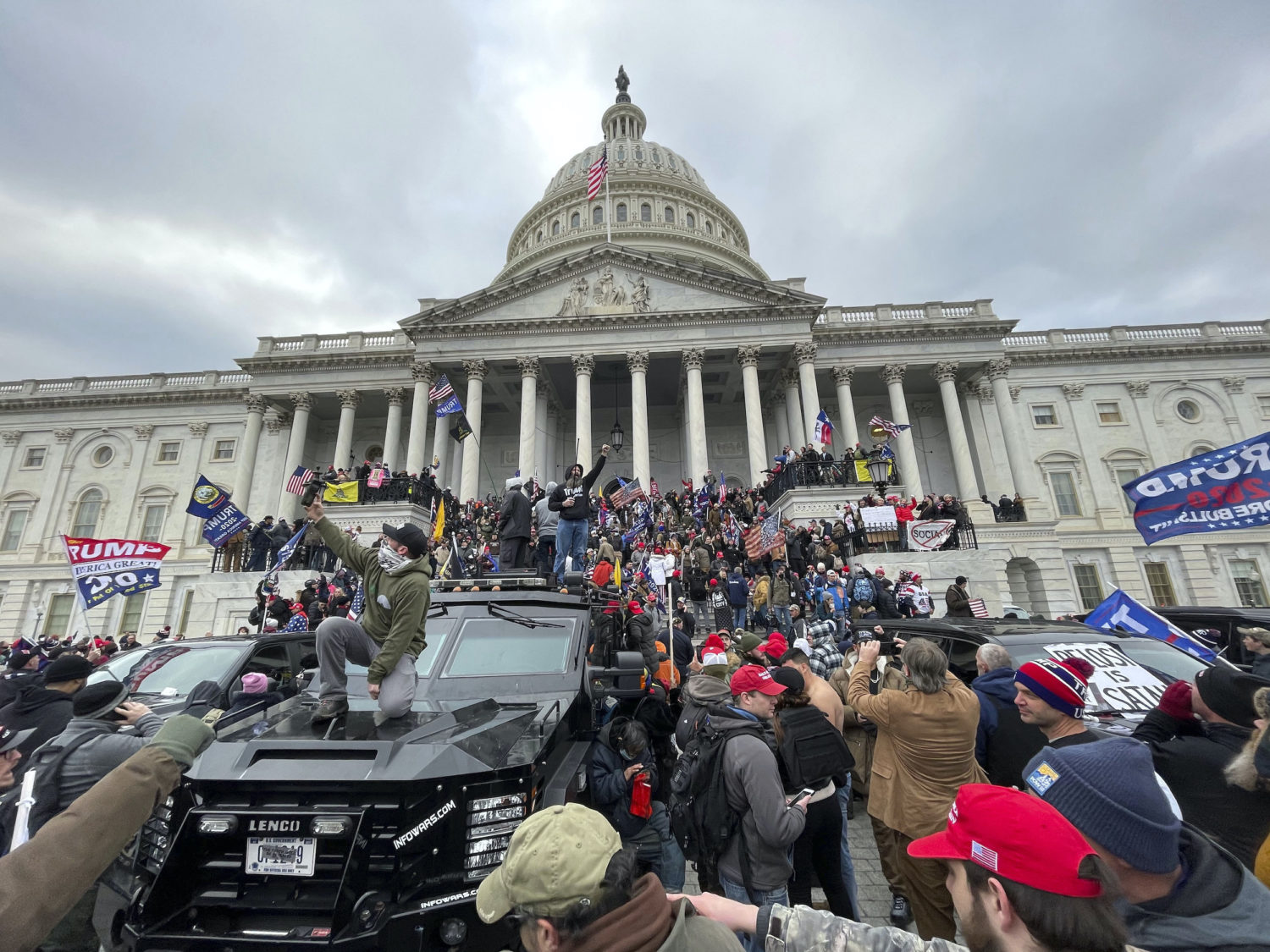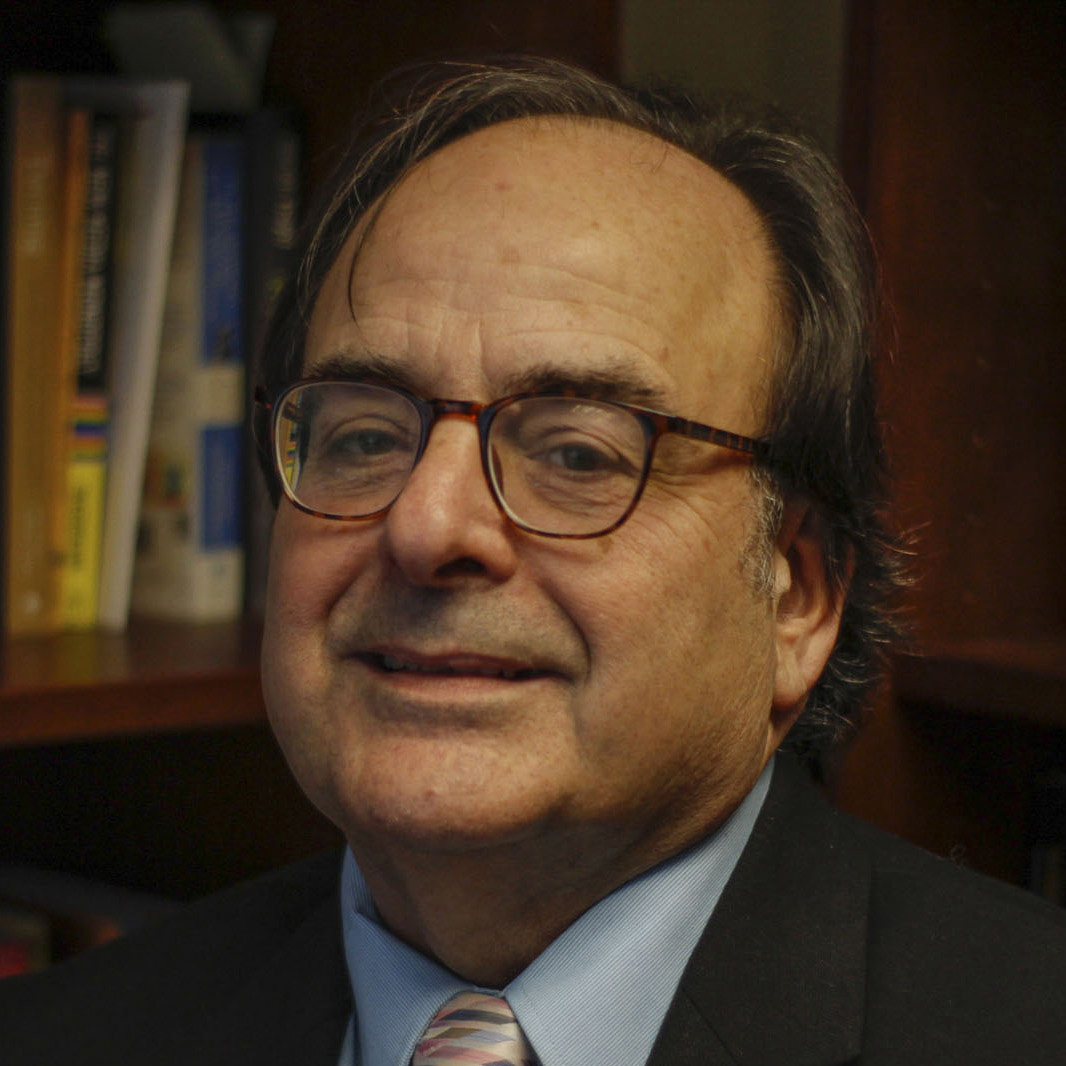From Area 51 aliens and Bigfoot sightings to deep state cabals and QAnon fanatics, conspiracy groups proliferate content on social media, often eclipsing fact-based news.
There are numerous explanations. Some experts believe conspiracy theories flourish in environments of political or social unrest. They point to former President Donald Trump’s conspiratorial claims of voter fraud fueling the Jan. 6 insurrection.
Psychologist Jovan Byford says conspiracy theorists seek an ordered, controllable world and “flourish when social machinery breaks down and available ways of making sense of the world prove inadequate for what is going on.”
University of Chicago political science professor Eric Oliver, who studies conspiracy theories, posits a deeper divide than ideological tags like right-wing, leftist, socialist, progressive or conservative: intuitionists vs. rationalists.
In the podcast “The Science of Conspiracy Theories and Political Polarization,” Oliver notes the rational part of our mind grasps clear fact-based logic whereas the intuitive part functions in “the dark, murky, unconscious well of the soul.” That creates anxiety about the uncertainty of the world, triggering the impulse to find answers as quickly as possible in the search for certainty.
COVID-19 has intensified that search. Adam Enders, a political scientist at the University of Louisville whose research links conspiracy theories with politics, explores how entrepreneurial politicians tap into populist sentiments, communicating this message: “I know you feel this way. Let me remind you that you feel this way. And then let me connect that to important things that are happening, like this upcoming vote, or this policy.”
That conspiratorial impulse, of course, led to pandemic theories ranging from the virus being a hoax to its escaping from a virology lab in Wuhan.
Zack Stanton wrote for Politico Magazine that conspiracy theories thrive in “the misinformation pandemic” and now constitute part of mainstream political discourse as “leaders weaponize them for their partisan benefit, and neutral, trusted sources of information lose sway.”
While experts differ on what causes a conspiracy theory, social psychologist Karen Douglas has defined it as a proposed plot conceived secretly by a powerful group of people with sinister goals and something to gain by deceiving the best interests of the public.
Replace “conspiracy theory” with “fake news” and journalism morphs into “enemy of the people.”
Landslide lies
Trump was impeached for inciting an insurrection. There was ample social media chatter that the Capitol would be stormed because of lies about the election. In fact, on Jan. 5, on Poynter, I wrote that journalists should hold accountable the 126 Republican representatives who believed conspiracy theories about Trump’s landslide win in the presidential election.
As USA Today reported, Trump’s speech to the mob Jan. 6 was laced with lies, misinformation and conspiracy theories. “The media is the biggest problem we have as far as I’m concerned — single biggest problem,” he said, “The fake news. We won this election, and we won it by a landslide.”
The lie resonated with his followers. During the riot, Trump supporters wrote “Murder the media” on a Capitol door, assaulted reporters and destroyed newsgathering equipment. One conspiracist shouted, “We’re the media now.”
That very well may be true in the future, given troubling factors I have explored in my “Interpersonal Divide” books (2005, 2017, Oxford University Press).
The first edition discussed how digital and social media would change our notion of community, undermining face-to-face interaction, and with it, local news. The second edition predicted the erosion of democratic values as users adopted the ethos of the machine: self-centeredness, impulsivity, distraction, incivility and, most important, affirmation over information and belief over fact.
Those character traits aligned seamlessly with Trump’s psychological profile.
As such, conspiracy theories have less to do with breakdowns in social machinery, weaponized politics or reason vs. intuition. Polarization materialized as millions of Americans googled answers from affinity groups, increasing screen time while mainstream media downsized newsrooms.
Critical conditions
Journalism is not dead but on life support. Social media dominates civic, political and familial debate, offering snap judgments to affinity groups.
Within a dozen years, we moved from the Age of Information to the Age of Distraction and now Conspiracy. In a 2007 article, I prophesied in The Futurist that critical thinking was at stake with fewer news outlets informing the public. Without critical thinking, I wrote, social media would create trivia, denigrating scientific models and replacing them with wishful or conspiratorial ones.
That effect worsened with each passing year, culminating with COVID-19.
Marketers report that the pandemic has increased by one hour per day the time U.S. adults spend on digital activities. Screen time in 2020 averaged seven hours and 50 minutes, a 15% increase from 2019 — and is expected to top eight hours by the end of 2022.
Meanwhile, the 2020 American Views survey of 20,000 U.S. adults found that “Americans perceive inaccurate news to be intentional — either because the reporter is misrepresenting the facts (52%) or making them up entirely (28%).”
A report from the Rand Corporation reinforces that notion, noting that between 1989 and 2017, “U.S.-based journalism has gradually shifted away from objective news and offers more opinion-based content that appeals to emotion and relies heavily on argumentation and advocacy.”
The shift occurred as journalism expanded to 24-hour cable news channels and on-demand internet outlets. In a word, there are not enough reporters to produce fact-based, verifiable reports around the clock and globe.
So, people turn to internet sites and web sleuths for quick answers to complex questions. In 2005, there were 50 million blogs; now there are 512 million with 77% of online users reading them.
According to the Pew Research Center, some 86% of U.S. adults get news from digital devices while 68% get news from TV; 16%, from radio; and 32% from print.
Pew also reports that U.S. newspapers alone have lost half of their newsroom employees between 2008-19, with overall editorial employment across platforms dropping by 23% from 114,000 to 88,000.
The pandemic magnified that crisis to such extent that Poynter regularly documents newsroom layoffs, furloughs and closures caused by the coronavirus.
Reversing trends
The American Press Institute recommends the following to reduce confusion about what constitutes news and what doesn’t:
- Provide explanation and analysis in news coverage.
- Make clearer distinctions between content types, clearly labeling news as distinct from opinion or analysis.
- Explain the purpose of opinion content and editorials.
- Identify possible new opportunities for your opinion sections, including adding diverse community views.
In the short term, media outlets need to hire more reporters, producers and editors and rely less on opinion and analyses. There’s plenty of that on blogs. Journalism, rather than psychology, sociology or political science, is uniquely qualified as conspiracy combatant because its primary mission is to enlighten the public so it makes intelligent decisions in the voting booth.
In the long term, high schools, colleges and universities should require media and technology literacy. As I noted in another Poynter column, journalism should be a required general education course so that future generations understand our mission and support news values.
Lauren Harris of Columbia Journalism Review’s Journalism Crisis Project thinks newsrooms are “coming up for air” in the wake of Trump’s presidency. As reporters cease covering every gloat and tweet, they should use that time “to build a larger coalition that focuses our efforts on rebuilding local newsrooms and, along with them, a more egalitarian and informed public.”
None of this can be done with fewer reporters. At minimum, we need more nonprofit outlets focusing on local news to complement coverage of mainstream ones. States Newsroom, for example, has added a network of state-based outlets with a national bureau in Washington.
I write for one, the Iowa Capital Dispatch, whose newsroom features former reporters from the Des Moines Register. In this video, editor Kathie Obradovich discusses its utility in an era of downsized newsrooms.
But this is not nearly enough.
Journalism cannot survive without regulation of social media using and paying for news content. That debate is happening now in Australia, Canada and elsewhere, requiring Facebook and Google to reimburse outlets every time a person clicks on a report.
It’s high time. As Tech Crunch reported in 2018, “Big news outlets stupidly sold their soul to Facebook,” believing those who clicked on news would subscribe. That seldom happened.
With democracy at stake and a Biden administration with a modicum of respect for journalism, hope is in the air and airwaves again.
We have hoped before.
In 2008, when digital platforms were gaining power, Poynter wrote about hope, noting the need for more reporters whose fact-based work could be verified. “Without a robust flow of news, bad things happen. Public discourse withers. Crooks and charlatans get a free ride. Citizens know less and less and become less qualified to govern their nation.”
This forecast rings eerily true in the Age of Conspiracy.
We must replenish newsrooms, create more nonprofit outlets and require social media payouts, or conspiracies will continue, eroding what is left of democracy and the public’s ability to differentiate between fact and factoid.
If nothing else, we owe emerging generations the truth, reason enough to restore our profession.







